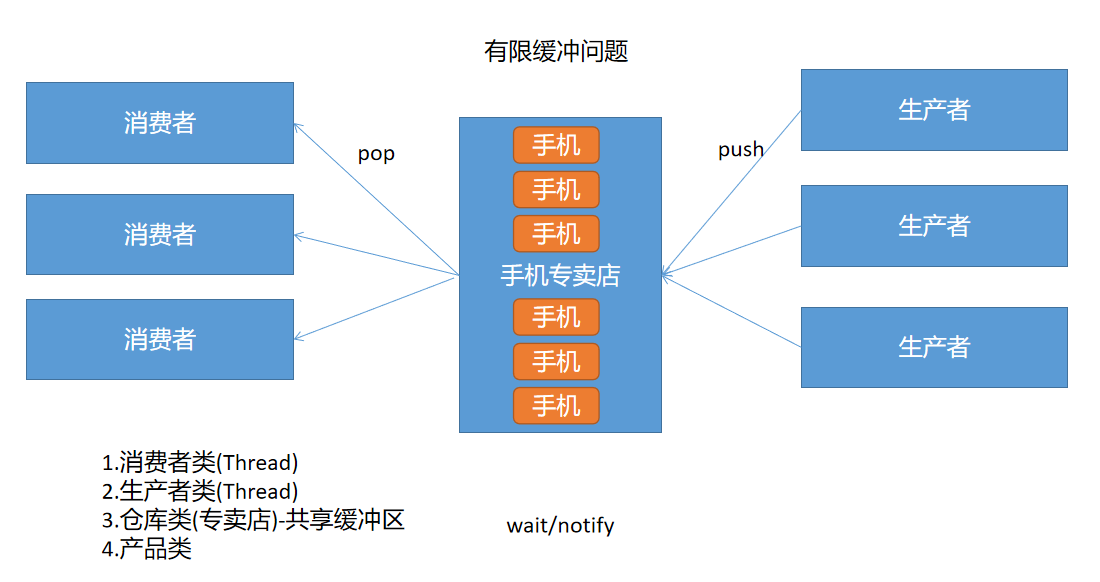05 - 线程(三) 🗯️
线程同步案例-多线程放号器
public class NumberGen implements Runnable{
private volatile static int num;
private static RandomAccessFile raf;
private boolean over;
static{
try {
raf = new RandomAccessFile("day5-Thread/record.txt","rw");
num = raf.readInt();
} catch (FileNotFoundException e) {
e.printStackTrace();
}catch (EOFException e){
// e.printStackTrace();
System.out.println("当前没有号码记录,重新放号");
num = 0;
}catch (IOException e) {
e.printStackTrace();
}
}
@Override
public void run() {
while(!over){
try {
Thread.sleep(500);
} catch (InterruptedException e) {
e.printStackTrace();
}
synchronized (this) {
try {
num++;
System.out.println(Thread.currentThread().getName() + "获取号码:" + num);
//将文件指针设置到开头处
raf.seek(0);
//将当前号码记录到文件中
raf.writeInt(num);
} catch (IOException e) {
e.printStackTrace();
}
}
}
}
public boolean isOver() {
return over;
}
public void setOver(boolean over) {
this.over = over;
}
public static void main(String[] args) {
NumberGen ng = new NumberGen();
Thread t1 = new Thread(ng,"放号机A");
Thread t2 = new Thread(ng,"放号机B");
Thread t3 = new Thread(ng,"放号机C");
t1.start();
t2.start();
t3.start();
}
}
线程的状态
概述
java 中的线程创建并启动之后不一定会一致持续执行,会根据程序的执行情况,存在各种不同的状态,之前了解操作系统中的线程分为 5 中状态(新建,就绪,执行,阻塞,死亡);但是 java 中对于线程有其他不同的解释,因此,java 中的线程状态在 Thread 类中有详细表述的。
Java 将线程分为六种状态:
| 状态 | 描述 |
|---|---|
| NEW | 新建状态,该状态表示线程对象创建还未处于可运行状态 |
| RUNNABLE | 可运行状态,线程处于准备运行或者正在被 JVM 进行调度执行的状态 |
| BLOCKED | 锁阻塞状态,线程等待被其他线程占据的对象监视器释放 |
| WATING | 无限等待,当执行以下对象的相关方法时:Object#wait(),Thread#join(),LockSuport#park() |
| TIMED_WATING | 限时等待,当执行以下对象的相关方法时:Thread#sleep(long time),Object#wait(long time) |
| TERMINATED | 中止状态,程序正常执行结束。线程销毁 |
以上状态可以到 Thread.State 枚举类中找到:
public enum State {
/**
* Thread state for a thread which has not yet started.
*/
NEW,
/**
* Thread state for a runnable thread. A thread in the runnable
* state is executing in the Java virtual machine but it may
* be waiting for other resources from the operating system
* such as processor.
*/
RUNNABLE,
/**
* Thread state for a thread blocked waiting for a monitor lock.
* A thread in the blocked state is waiting for a monitor lock
* to enter a synchronized block/method or
* reenter a synchronized block/method after calling
* {@link Object#wait() Object.wait}.
*/
BLOCKED,
/**
* Thread state for a waiting thread.
* A thread is in the waiting state due to calling one of the
* following methods:
* <ul>
* <li>{@link Object#wait() Object.wait} with no timeout</li>
* <li>{@link #join() Thread.join} with no timeout</li>
* <li>{@link LockSupport#park() LockSupport.park}</li>
* </ul>
*
* <p>A thread in the waiting state is waiting for another thread to
* perform a particular action.
*
* For example, a thread that has called <tt>Object.wait()</tt>
* on an object is waiting for another thread to call
* <tt>Object.notify()</tt> or <tt>Object.notifyAll()</tt> on
* that object. A thread that has called <tt>Thread.join()</tt>
* is waiting for a specified thread to terminate.
*/
WAITING,
/**
* Thread state for a waiting thread with a specified waiting time.
* A thread is in the timed waiting state due to calling one of
* the following methods with a specified positive waiting time:
* <ul>
* <li>{@link #sleep Thread.sleep}</li>
* <li>{@link Object#wait(long) Object.wait} with timeout</li>
* <li>{@link #join(long) Thread.join} with timeout</li>
* <li>{@link LockSupport#parkNanos LockSupport.parkNanos}</li>
* <li>{@link LockSupport#parkUntil LockSupport.parkUntil}</li>
* </ul>
*/
TIMED_WAITING,
/**
* Thread state for a terminated thread.
* The thread has completed execution.
*/
TERMINATED;
}
Timed Wating(计时等待)
计时等待也称之为限时等待,即线程会执行一段时间的休眠,等待休眠时间到达,此时线程自动苏醒
sleep(long time)
public class TimedWatingDemo extends Thread{
@Override
public void run() {
for (int i = 0;i < 100 ;i++){
try {
sleep(5000);
System.out.println(getName()+"-->"+i);
} catch (InterruptedException e) {
e.printStackTrace();
}
}
}
public static void main(String[] args) {
new TimedWatingDemo().start();
}
}
wait(long time)
public class TimedWatingDemo extends Thread {
private Object obj = new Object();
@Override
public void run() {
for (int i = 0; i < 100; i++) {
synchronized (obj) {
try {
obj.wait(5000);
System.out.println(getName() + "-->" + i);
} catch (InterruptedException e) {
e.printStackTrace();
}
}
}
}
public static void main(String[] args) {
new TimedWatingDemo().start();
}
}
sleep()和 wait()区别?
sleep:
- sleep()是Thread 类中提供一个方法,用于实现线程的限时休眠
- sleep()方法的执行不需要持有对象的监视器(不需要获取锁)
wait:
- wait 方法是来自Object 类中的方法,既可以实现线程的限时休眠,也可以实现线程的无限休眠
- wait 方法的使用必须持有对象的监视器,否则会出现
java.lang.IllegalMonitorStateException异常- wait 方法如果处于无限等待状态,则需要其他通过 notify 或 notifyAll 唤醒
- wait 方法的执行将会释放对象监视器
Blocked(锁阻塞)
该状态即一个线程处于等待其他线程释放对象锁的状态,例如死锁案例中:
if ("t1".equals(name)) {
synchronized (o1) {
System.out.println(name + "已锁定o1");
//此时t1线程等待其他线程释放o2的对象锁
synchronized (o2) {
System.out.println(name + "执行完毕");
}
}
} else if ("t2".equals(name)) {
synchronized (o2) {
System.out.println(name + "已锁定o2");
//此时t2线程等待其他线程释放o1的对象锁
synchronized (o1) {
System.out.println(name + "执行完毕");
}
}
}
Wating(无限等待)
当执行对象的某些特定方法时(如 Object 的 wait),会导致线程处于无限等待状态,即处于不确定何时能恢复执行,具体的恢复时间通常由其他线程进行控制(例如调用 Object 的 notify 或 notifyAll):
public class WaitDemo {
public static void main(String[] args) {
final Object obj = new Object();
new Thread("线程A"){
@Override
public void run() {
synchronized (obj){
System.out.println(getName()+"执行。。。已锁住obj");
try {
//线程A处于无限等待状态(同时会释放obj对象的对象监视器)
obj.wait();
} catch (InterruptedException e) {
e.printStackTrace();
}
System.out.println("执行完毕");
}
}
}.start();
new Thread("线程B"){
@Override
public void run() {
synchronized (obj) {
try {
Thread.sleep(5000);
//等待5秒之后,线程B会唤醒(同时释放obj对象的对象监视器)
obj.notify();
} catch (InterruptedException e) {
e.printStackTrace();
}
}
}
}.start();
}
}
wait、notify、notifyAll
public static void main(String[] args) {
final Object obj = new Object();
final Object obj2 = new Object();
new Thread("线程A"){
@Override
public void run() {
synchronized (obj){
System.out.println(getName()+"执行...已锁住obj");
try {
obj.wait();
} catch (InterruptedException e) {
e.printStackTrace();
}
System.out.println(getName()+"执行完毕");
}
}
}.start();
new Thread("线程C"){
@Override
public void run() {
synchronized (obj){
System.out.println(getName()+"执行...已锁住obj");
try {
obj.wait();
} catch (InterruptedException e) {
e.printStackTrace();
}
System.out.println(getName()+"执行完毕");
}
}
}.start();
new Thread("线程B"){
@Override
public void run() {
synchronized (obj){
try {
Thread.sleep(5000);
obj.notifyAll();
} catch (InterruptedException e) {
e.printStackTrace();
}
}
}
}.start();
}
- wait():方法的执行会导致当前线程处于无限等待状态,只有其他具备该对象监视器的对象执行 notify 或 notifyAll 时才能将其唤醒
- notify():唤醒等待当前对象的对象监视器的单个线程
- notifyAll():唤醒等待当前对象对象监视器的所有线程
生产者消费者问题
生产者消费者问题是线程中一个比较经典的案例,也成为有限缓冲区问题
